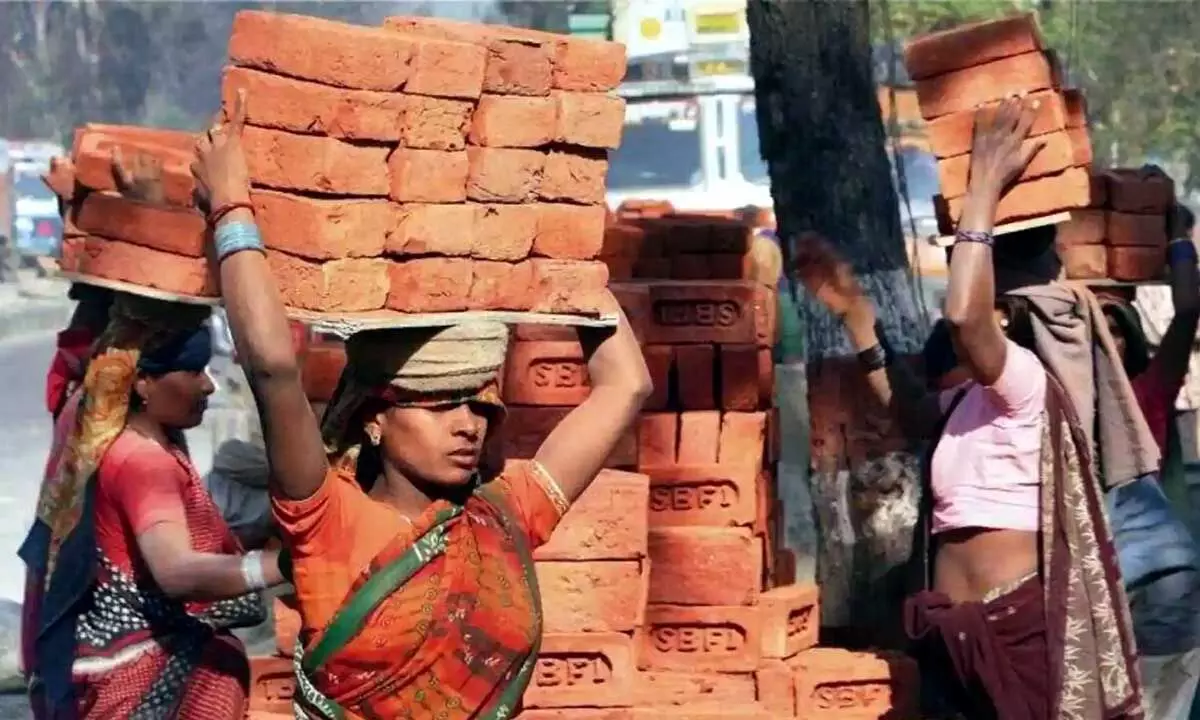Needs to shift from jobless growth to inclusive growth
According to the recent Centre for Monitoring Indian Economy, a private organization (CMIE) report, the unemployment rate in urban areas increased to 10.09 per cent in December from 8.96 per cent the previous month while the rate in rural areas decreased to 7.44 per cent from 7.55 per cent.
image for illustrative purpose

According to the recent Centre for Monitoring Indian Economy, a private organization (CMIE) report, the unemployment rate in urban areas increased to 10.09 per cent in December from 8.96 per cent the previous month while the rate in rural areas decreased to 7.44 per cent from 7.55 per cent.
According to separate quarterly figures prepared by the state-run National Statistical Office (NSO) and released in November 2022, the unemployment rate decreased to 7.2 per cent in the July-September quarter from 7.6 per cent in the preceding quarter.
The urban unemployment rate rose to 10.09 per cent in December from 8.96 per cent in the previous month, while the rural unemployment rate slipped to 7.44 per cent from 7.55 per cent, the data showed.
Although India's unemployment rate has historically been high, it is predicted to rise in the next few years. In fact, even if the nation's economy continues to expand at a healthy clip, the Organization for Economic Cooperation and Development (OECD) forecast that India's jobless rate will quadruple from 4 per cent to 8 per cent by 2022.
India needs to move from a single focus on GDP growth to growth with employment, skilling of youth and creating production capacities with export prospects. A big part of the problem is the country's poor system of education and job-training, which means local degrees and certificates are often considered worthless by employers. In large-scale surveys, employers have said that fewer than half the college graduates entering the workforce in India have the skills they need or the ability to pick them up in the workplace. Unable to get hired, many discouraged job seekers decide instead to continue their studies, join family members in farming or just stay home, surviving on family rental income, pensions received by elderly household members or government transfers. Many women end up doing unpaid work at home: housekeeping, cooking and taking care of elderly relatives and kids.
India currently has the advantage of youth - half the population is under 30 - but it will start aging in the coming decades. At the current trend there will be more people older than 59 than in the working-age bracket by 2040.
Unsecured employment,' 'poor salary, 'stressful workplace,' and the job-qualification mismatch appear to be the most common causes for discontent with a present job. Both educated and uneducated people are affected by unemployment, but educated people are affected more than the uneducated ones, because of their education, they prefer to work in their desired area.
From a 6 per cent unemployment rate in 2017, India's unemployment rate would climb to 8.3 per cent by 2022. According to the estimate, over the next four years, 10 million more people will join the ranks of the unemployed, bringing the total to 220 million by 2022. The government also forecasts that there will be 1 million additional job vacancies over this time period, but it also expects that the number of jobs would not be sufficient to counteract the population expansion in general.
The Centre for Monitoring Indian Economy, a private organization (CMIE), estimates India's unemployment rate in India is around 8.3 per cent at present. It is 10.09 per cent in urban India whereas only 7.44 per cent in rural India. India's daily and monthly unemployment rates are made public by CMIE on 1st January 2023.

